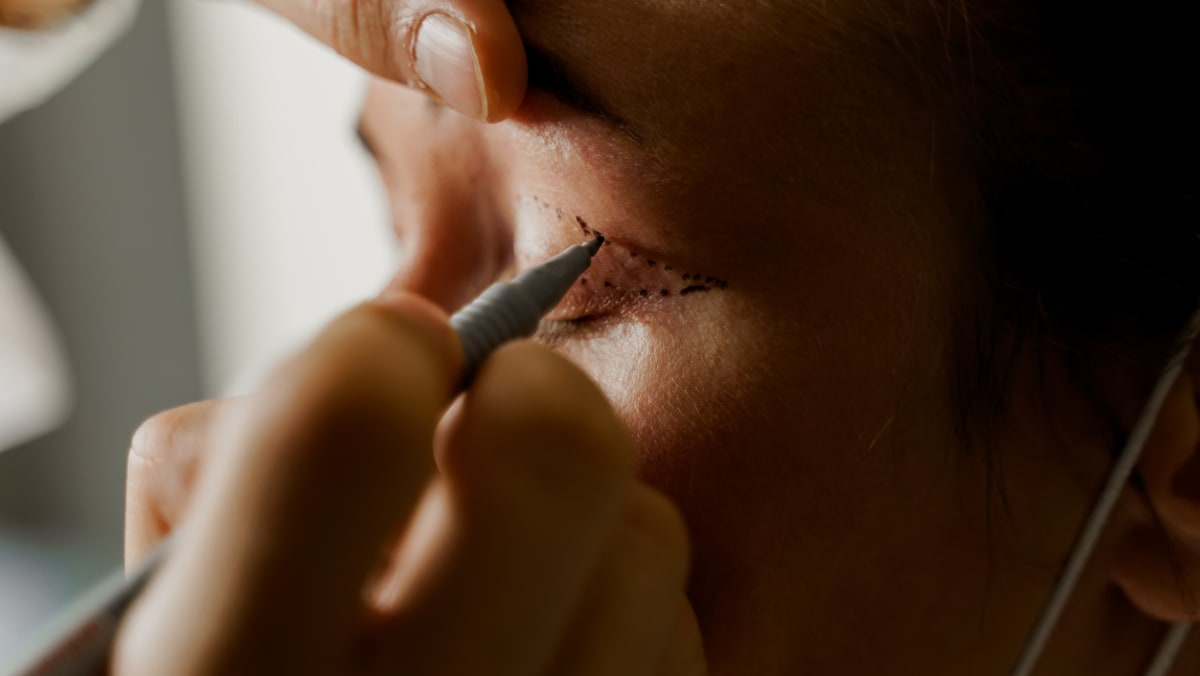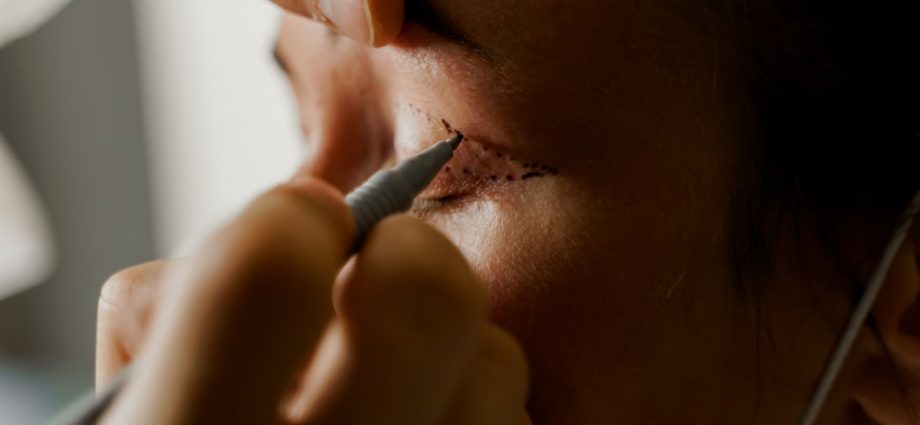
SINGAPORE: The director of a property investment firm was unhappy with the outcome of a surgery on his eyelids, which left him with “high and prominent upper eyelid creases”.
Mr Lee Kong Ghee sued plastic surgeon Andrew Khoo Kian Ming and the Aesthetic & Reconstructive Centre for negligence, seeking damages that were not specified in the judgment.
However, the judge threw out the suit. In a judgment released on Friday (Feb 10), District Judge Tan May Tee found that the clinic and plastic surgeon had adequately advised the plaintiff about the treatment procedures.
She said that the plaintiff’s dissatisfaction with the aesthetic result of his eyelids after the procedure is “his subjective opinion which does not provide a legal basis for a negligence claim”.
THE CASE
Mr Lee was 53 when he consulted a neurosurgeon in September 2013 to remove a lump on his forehead. The lump had formed after Mr Lee hit his forehead on a glass wall in January 2011 and had grown larger over time.
He wanted the bony lump removed after his friends began noticing it, and went to the neurosurgeon.
It was decided that the neurosurgeon would remove the benign bony growth, and the defendant Dr Khoo would then suture the wound and perform surgeries on Mr Lee’s upper and lower eyelids while Mr Lee was still under general anaesthesia.
The surgeries were carried out on Oct 11, 2013 as planned. Mr Lee stayed in hospital overnight instead of being discharged that day, as his eyes were swollen, affecting his vision.
About three weeks after the surgery, Mr Lee attended a third post-operative consultation with Dr Khoo. He was happy with the outcome of the surgeries on his forehead and lower eyelids, but was unhappy with the look of his upper eyelids, which were still swollen.
He said the swelling had caused his eyelid creases to be higher and more prominent. He raised concerns about the condition of his eyes and the slow rate of recovery, and was unhappy with the thickness of his double eyelids, the purple discolouration and the swelling.
He was told to be patient and was assured that the upper eyelids would heal in time and the swelling would go away. Dr Khoo noted that the wounds were healing well, and told Mr Lee to wait for the swelling to resolve, which would result in a more natural look.
Mr Lee said he had been using “traditional therapy” with eggs to reduce the swelling and was advised against it. He asked for topical creams for scar therapy as he was returning to China and was prescribed some.
Mr Lee surreptitiously recorded this discussion during his consultation, a transcript of which was produced at trial.
After this consultation, Mr Lee went to consult other doctors.
He consulted Dr Martin Huang Hsiang Shui at his clinic MH Plastic Surgery in January 2014 and later took Botox injections to his brow and crow’s feet areas to treat his frown and smile lines and to lift his eyebrows.
A month later, Mr Lee returned to see Dr Khoo, armed with a recording device to secretly record the conversation.
He complained of the aesthetic appearance of his upper eyelids, eye irritation, discomfort and sensitivity to light and asymmetric upper eyelids.
Dr Khoo found it difficult to examine him due to his squinting and blinking, and noted that the swelling had resolved but that Mr Lee had asymmetric eyelid creases.
Dr Khoo was unable to find the cause of Mr Lee’s eye irritation and discomfort and offered to refer him to an ophthalmologist first.
However, after this, Mr Lee did not return to see Dr Khoo and instead instructed his first set of solicitors.
Mr Lee claimed that Dr Khoo had been negligent in failing to advise or warn him about all or any of the likely or possible consequences of the surgical procedure.
He also claimed, among other things, the outcome of the surgery was not the expected aesthetic result that was promised. He said he received double eyelids, which he had not requested.
Mr Lee said he had suffered loss and damage and put through considerable inconvenience and expense.
THE DEFENCE
In their defence, Dr Khoo and the clinic denied all allegations. They said Dr Khoo had conducted a full clinical examination of Mr Lee in September 2013, when Mr Lee sought advice on the removal of eye bags and treatment for a fresher look for his upper eyelids.
A clinical examination showed that Mr Lee had brow ptosis, or a descent of the eyebrow from its normal position, so Dr Khoo suggested a browlift procedure for the upper eyelids.
However, Mr Lee rejected this and instead wanted an alternative proposal for an upper blepharoplasty, the procedure involving his upper eyelids.
Dr Khoo said the blepharoplasty was not intended to and did not construct double eyelids for Mr Lee, as he originally already had double eyelids.
The defendants’ case was that even if Dr Khoo was found negligent, Mr Lee had caused or contributed to his own condition by failing to return for a follow-up consultation and treating himself with “traditional” egg therapy without seeking medical advice from Dr Khoo.
Judge Tan found that Mr Lee had failed to prove that Dr Khoo had breached his duty of care. She found that Mr Lee had been adequately advised on the condition of his brows and upper eyelids and the treatment procedures available, including a brow lift which he declined.
He had also been informed of the risks and possible complications of the upper blepharoplasty procedure.
“The plaintiff has also failed to prove that the injuries he claimed to have suffered were in any way caused by the first defendant’s diagnosis and treatment of his condition,” said the judge.
“The plaintiff’s dissatisfaction with the aesthetic result of his eyelids after the procedure is his subjective opinion which does not provide a legal basis for a negligence claim against the first defendant. Notably, he has resiled from his initial position since he did admit in cross-examination that he could accept his post-operative look as seen in the photographs.”
She dismissed Mr Lee’s case against both the surgeon and the clinic and ordered parties to prepare arguments on costs.

